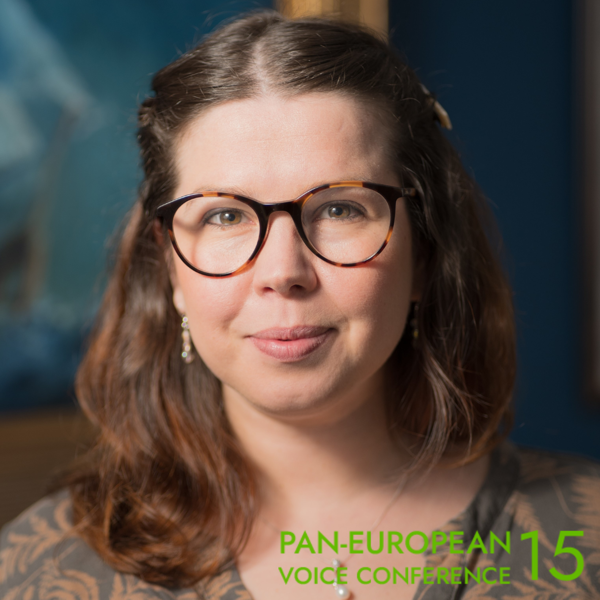Course Review: Increasing Your Perceived Value: Strategies for Voice Teachers with John Henny
Thursday 22nd February 2024John Henny’s short course on increasing your perceived value began by describing the overall journey of the voice teacher, noting that small steps are powerful, imperfections should be accepted, and “it’s not what you do but who you are” (you are uniquely you, connecting with your audience in your own unique way).
John went on to discuss the words ‘perception’ and ‘value’ in greater detail, instructing participants to ask themselves questions such as “How do prospective clients perceive you?” and “What are you putting out there?”. He recommended writing everything you can think of on a piece of paper under the headings ‘what can you offer?’ and ‘what specific problems can you solve?’ and then refining afterwards to home in on what would give prospective clients the most value. The ideal outcome is to increase the likelihood of achieving something/solving a problem while decreasing the time and effort taken.
So, how much should you charge? John explained some of the many variables in play here, including competitors, education, experience, the local area and your own comfort level. But noted that perceived value is the ultimate pricing lever. He used his music academy (pre-COVID) and its first-class facilities and provision of books and resources as a great example of increasing perceived value through an initial expenditure that can be recouped back by the lesson rates charged.
A great starting place for increasing perceived value is honing your ‘superpower’ i.e. What are you REALLY good at? Why do students come to you? What excites you? What do you love to teach? John recommended becoming known for this above everything else and making people want to learn from you specifically (building an audience looking for YOUR solution).
Another great tool for increasing perceived value is creating your own avatar, your perfect student, which will act as your ongoing guide (like an ‘imaginary friend’). What age are they? What do they want to sing? What do they like to listen to? And most importantly, what is their (level of) resistance to purchasing something from you or studying with you, and how do you overcome that? (this is commonly suspicion of being ‘scammed’). Answering all these questions will help you make the right content specifically for them.
The next part of the course explored social media and how one platform should be focused on initially (because content can always be repurposed in time). John warned that you do not own your assets – you are creating for a corporation – therefore you need to ‘own the racecourse’ (quote from business coach James Schramko). In other words, it’s more beneficial to bring people to the assets you own. This includes:
- Your website – this is where you warm your audience
- Your e-mail list – the MOST IMPORTANT asset (most teachers get this wrong)
- Other assets – books, podcasts, etc. (anything YOU own)
John added an additional note about books and how they can be the “ultimate business card” and can lead people directly to your racecourse. He shared the example of his own books which always have bonus materials that lead back to his website. Next, he explored the path that you might create for a prospective client who is interested in what you can offer. This can be broken down into the following steps:
- Free stuff – blog, video, podcast (this should be your most valuable content – don’t hold back or think you are giving too much away)
- ‘Lead Magnet’ – e-book, short audio/video lesson (something free but which requires an exchange of value e.g. getting their e-mail address in return)
- Tripwire – short course, vocal assessment (low-cost purchase)
- Premium – private lessons, in-depth courses (higher cost purchase)
- Upsell opportunities – recording, audition coaching, mentorship
A brief discussion of webinars and how they need to have clear goals to achieve led into a short Q&A session during which John offered tips for increasing perceived value in person rather than online. Following the Q&A, the second half of the course kicked off with an exploration of the concept of passive income.
John talked about courses, recommending that you start small (and low cost) and manage expectations. He added that testing/feedback is key for then planning the next course and the next one after that. Reoccurring courses that promote retention and keep people engaged is the ultimate goal, and this led nicely back to the notion of increasing the likelihood of solving a problem while keeping time and effort as low as possible.
The importance of accountability was emphasised, factoring in targeted goals, deadlines, advice, encouragement and clarity. Investing in a coach or mentor can be invaluable as you are progressing to the next level. Accountability practiced correctly includes promoting positive momentum to get things done, guiding through the challenges, celebrating the gains, and making room for more, more, more.
John then moved on to discuss the relationship with the customer/client, offering the following advice:
- Don’t rush – everything starts slow
- Show value – help them
- Offer choices and levels
- Aim to progress from low cost and commitment to higher cost and commitment
He then talked through the sales funnel and the different levels of people within your audience. Most people are ‘cold’ then they can turn to ‘warm’, ‘hot’, and finally ‘buyers’ (which can eventually become ‘super buyers’!). To nurture this journey, you shouldn’t give ultimatums – only choices and ascension paths – and it’s not “NO”, rather “Not now”.
To conclude the course, John went through the benefits of different aspects of your ‘revenue engine’. He noted that e-mails should be ‘job #1’ for studio and influence growth and that a specific platform such as Mailchimp should be used. Small lists can be profitable and keeping engagement/value is key. Growing your list can be done via driving to free content and creating valuable Lead Magnets. John’s advice for advertising, websites and blogging is as follows:
Advertising
- Facebook/Instagram is the easiest place to start
- Quick but can get incredibly expensive
- Run ads to free material then retarget people
Website
- Keep it updated, fast and scrollable
- Include an offer ‘above the fold’ (prominent)
- Speak to your avatar and solve their problem(s)
Blogging
- Take care with SEO (keywords and headlines)
- Include short paragraphs, images and lists (keeping them scrollable)
Brief discussions of artificial intelligence (AI) and some helpful additional business resources brought the presentation to a close, before the course concluded with a second Q&A session.



